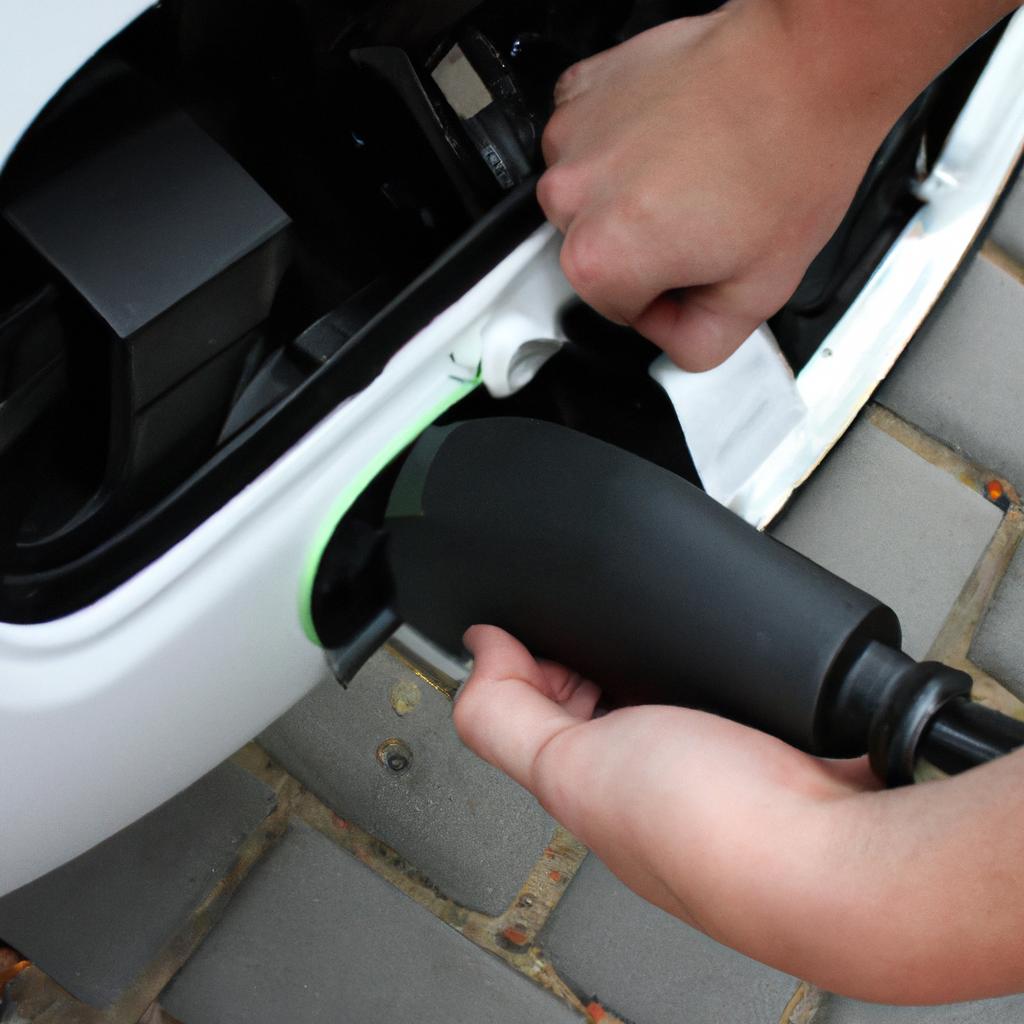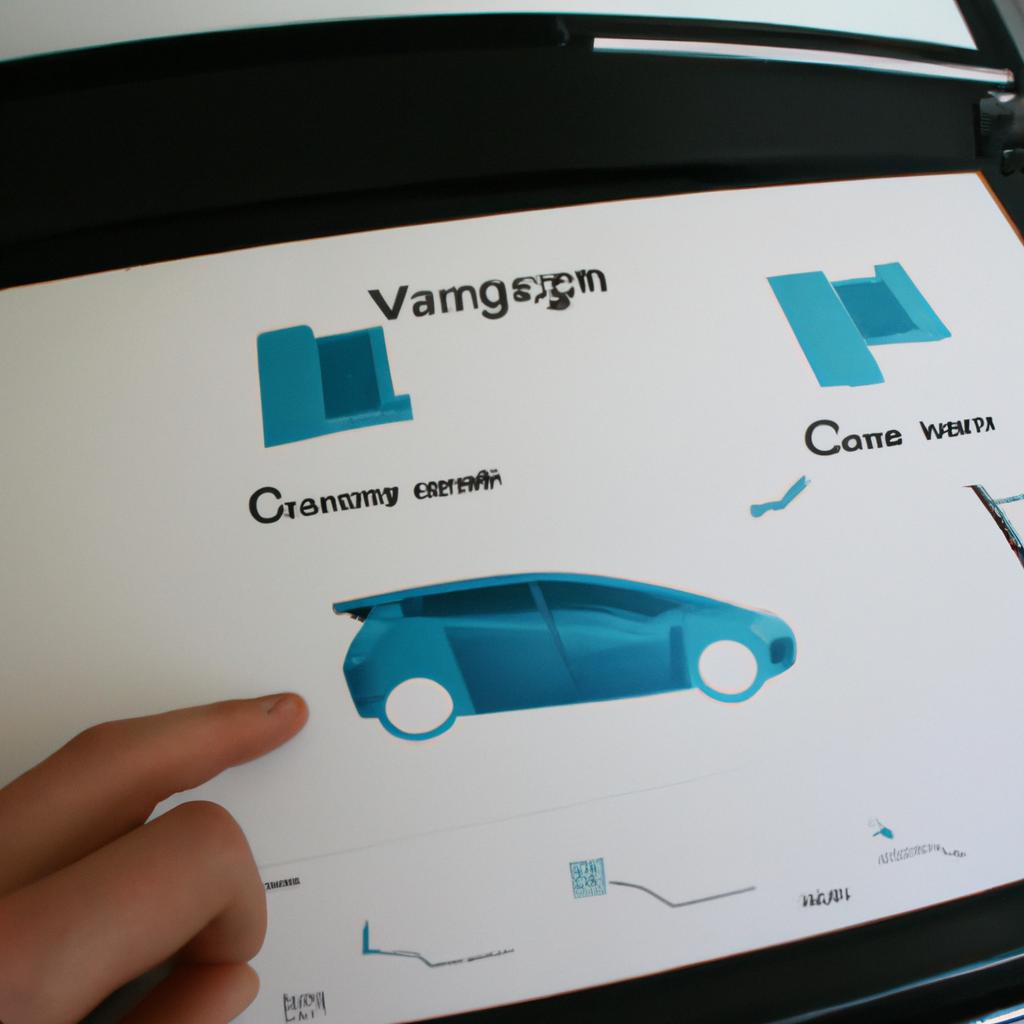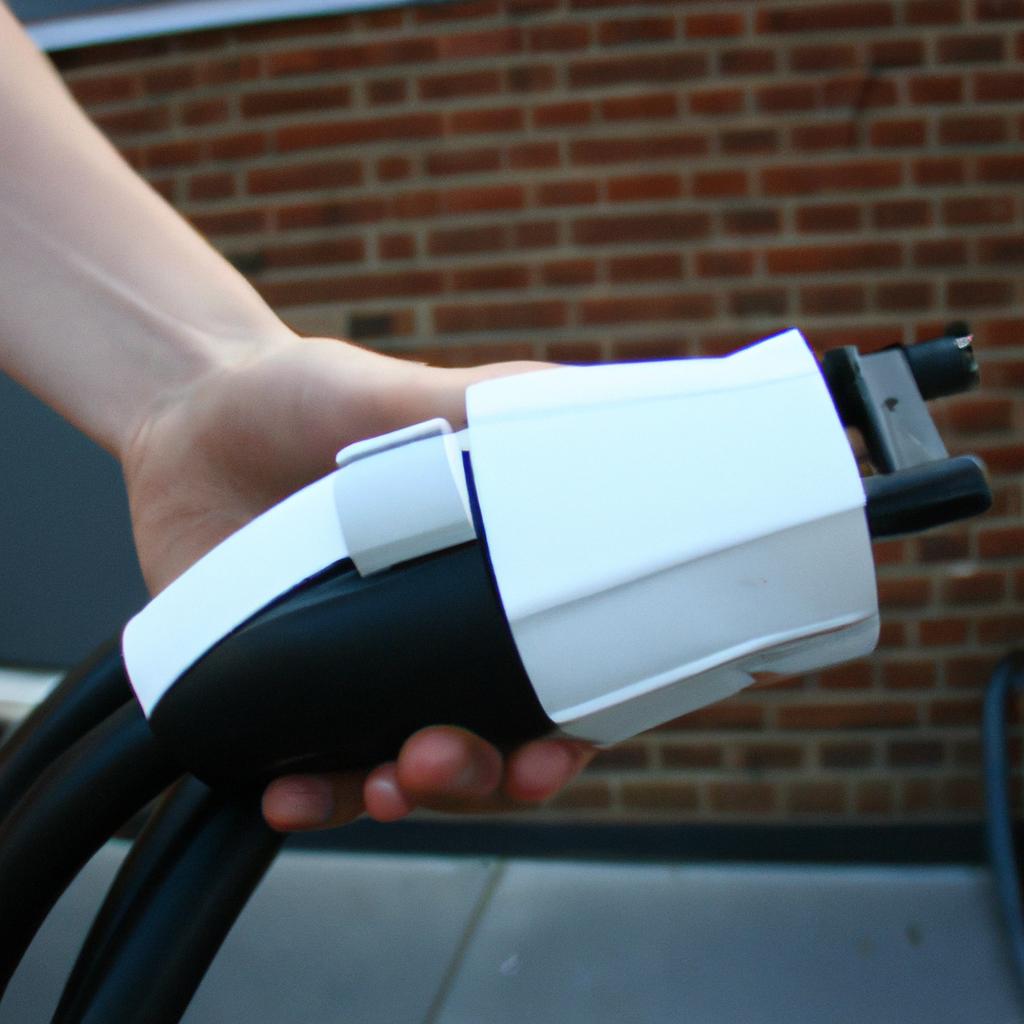Range anxiety is a common concern among electric vehicle (EV) owners, stemming from the fear of not being able to reach their destination due to limited battery range. This apprehension arises primarily from the lack of charging infrastructure and uncertainties regarding optimal route planning for EVs. To address this issue, researchers have been exploring various strategies to alleviate range anxiety and enhance the overall user experience. For instance, in a hypothetical scenario, consider an individual planning a road trip with an EV but unsure about finding charging stations along the way. The challenge lies in determining the most efficient route that maximizes both convenience and range without compromising on time.
To overcome range anxiety, effective route planning must account for several factors such as distance between charging stations, energy consumption patterns of different EV models, and potential detours or traffic congestion. By considering these variables during route selection, drivers can optimize their travel plans to minimize unnecessary stops, prolong battery life, and reduce overall journey time. Additionally, integrating real-time data on charging station availability and waiting times can further enhance the accuracy and reliability of EV route planning systems. Thus, understanding the complexities associated with addressing range anxiety through efficient route planning is crucial for promoting widespread adoption of electric vehicles while ensuring seamless mobility experiences for users.
Understanding the limitations of electric vehicle range
To comprehend the challenges associated with electric vehicle (EV) range, it is essential to recognize the constraints that come with relying on battery power alone. For instance, imagine a hypothetical scenario where an individual plans a road trip in their newly purchased EV. They map out their intended route and estimate the distances between charging stations along the way. However, unforeseen circumstances such as traffic congestion or detours force them to deviate from their planned path. As a result, they find themselves further away from the nearest charging point than anticipated. This situation exemplifies one of the key concerns surrounding EVs – range anxiety.
Range anxiety refers to the fear or unease experienced by EV drivers when they are uncertain about whether their vehicles will have enough charge to reach their destination or if they will be able to find a charging station en route. It is often influenced by several factors:
- Charging infrastructure availability: The presence of an extensive network of charging points greatly alleviates range anxiety, providing reassurance to drivers that they can access reliable sources of energy when needed.
- Battery technology and capacity: Advances in battery technology play a crucial role in overcoming range limitations. Higher-capacity batteries allow for longer driving ranges, reducing the frequency at which recharging is required.
- Driving conditions: Varied terrain, extreme temperatures, and frequent stops can impact an EV’s efficiency and reduce its overall range.
- Driver behavior: Aggressive acceleration, excessive speed, constant use of air conditioning or heating systems may all contribute to increased energy consumption and subsequently decrease driving range.
The following table illustrates how different factors can affect an EV’s estimated mileage based on real-world data:
| Factor | Estimated Mileage Impact |
|---|---|
| Extreme Temperatures | Up to 40% reduction |
| Hilly Terrain | Up to 20% reduction |
| City Driving | Similar range due to frequent regenerative braking |
| Highway Driving | Up to 30% reduction |
Understanding these limitations and their impact on EV range is crucial for addressing the concerns surrounding range anxiety. By investigating factors that influence an EV’s driving distance, we can devise strategies to optimize range efficiency in subsequent sections.
Moving forward, our discussion will delve into various aspects such as vehicle design, route planning algorithms, and charging infrastructure development that play a pivotal role in mitigating range anxiety and enhancing the overall experience of owning an electric vehicle.
Factors influencing range and how to optimize it
Understanding the limitations of electric vehicle range is crucial in addressing range anxiety. By acknowledging these limitations, drivers can take necessary measures to optimize their vehicle’s range and alleviate concerns about running out of charge during a journey.
One example that highlights the importance of understanding electric vehicle range limitations is a case study conducted by an automotive research organization. They analyzed the driving patterns of several electric vehicle owners and found that one common factor contributing to range anxiety was inconsistent charging infrastructure availability along commonly traveled routes.
To effectively address this issue, there are several key factors that influence electric vehicle range which should be taken into consideration:
- Driving conditions: Factors such as speed, acceleration, and terrain have a significant impact on energy consumption. Highway driving at high speeds often results in increased energy usage compared to city driving or cruising at lower speeds.
- Temperature extremes: Extreme temperatures, whether hot or cold, can affect battery performance and decrease overall range.
- Auxiliary systems usage: Utilizing features like air conditioning or heating while driving can increase energy consumption and reduce available range.
- Payload weight: Carrying additional weight in the form of passengers or cargo affects energy efficiency and subsequently reduces electric vehicle range.
In order to visually emphasize the significance of understanding these factors for optimizing electric vehicle range, consider the following table:
| Factor | Impact on Range |
|---|---|
| Driving Conditions | High |
| Temperature | Moderate |
| Auxiliary Systems | Moderate |
| Payload Weight | Low |
By considering these factors when planning an electric vehicle trip, drivers can make informed decisions regarding their travel route and adjust their expectations accordingly. This will help mitigate any potential concerns related to running out of charge during their journey.
Mapping out charging stations along your route becomes imperative for long-distance trips with electric vehicles. By identifying charging station locations strategically placed within feasible distances from each other, drivers can ensure they have adequate opportunities to recharge their vehicle’s battery during extended journeys. This proactive approach allows for a more seamless and worry-free travel experience, alleviating range anxiety and fostering greater confidence in electric vehicle usage.
Transitioning into the subsequent section about “Mapping out charging stations along your route,” drivers can further enhance their trip planning by taking advantage of available charging infrastructure to ensure uninterrupted journeys with their electric vehicles.
Mapping out charging stations along your route
In the previous section, we explored the various factors that can influence the range of electric vehicles (EVs) and discussed strategies for optimizing it. Now, let’s delve deeper into another crucial aspect of route planning for EVs – mapping out charging stations along your intended route.
Imagine you are embarking on a road trip with your electric vehicle from San Francisco to Los Angeles. To ensure a smooth journey without any range anxiety, it is essential to plan ahead and have an idea of where charging stations are located along the way. Let us consider this hypothetical scenario as we explore the importance of mapping out charging stations during route planning.
Mapping out charging stations has become increasingly important due to the growing popularity of electric vehicles. Here are some key reasons why incorporating this step in your route planning process is vital:
- Peace of mind: Knowing that there are sufficient charging stations along your planned route provides reassurance and reduces concerns about running out of battery power.
- Time efficiency: Identifying charging stations strategically allows you to plan stops at suitable intervals, minimizing travel disruptions while ensuring necessary recharging opportunities.
- Accessibility considerations: Mapping out charging station locations enables individuals with specific accessibility needs or limited mobility to factor in places where they can recharge their vehicles comfortably.
- Emergency preparedness: Planning for contingencies such as unexpected delays or detours by including alternate charging station options ensures you’re prepared for unforeseen circumstances.
To illustrate the significance of mapping out charging stations during route planning, let’s take a look at the following example table showcasing a portion of possible charging station locations between San Francisco and Los Angeles:
| Charging Station | Location | Charger Type |
|---|---|---|
| ChargePoint | Salinas | Level 2, DCFC |
| Tesla Supercharger | Harris Ranch | Supercharger |
| EVgo | Santa Maria | Level 3, DCFC |
| Electrify America | Santa Barbara | Level 2, DCFC |
By having access to this information and incorporating it into your route planning process, you can make informed decisions about where and when to recharge your EV. This not only ensures a worry-free journey but also contributes to the overall success of electric vehicle adoption.
Utilizing range prediction tools and apps
Mapping out charging stations along your route can greatly alleviate range anxiety for electric vehicle (EV) drivers. However, in addition to planning where and when to charge, utilizing range prediction tools and apps can provide further reassurance during long trips.
For instance, let’s consider the case of a driver embarking on a road trip from Los Angeles to San Francisco in an EV. Before setting off, they plan their route using online mapping platforms that show not only the most efficient way to reach their destination but also highlight the locations of charging stations along the way. Armed with this information, they have peace of mind knowing that there are ample opportunities to recharge their vehicle throughout the journey.
To enhance range prediction accuracy, numerous tools and smartphone applications exist specifically tailored for EVs. These resources employ advanced algorithms that take into account various factors such as battery health, driving habits, terrain conditions, weather forecasts, and traffic patterns. By inputting relevant data such as starting point, destination, and planned stops for recharging, these tools generate real-time estimates of remaining battery capacity at different points along the chosen route.
In order to evoke an emotional response in EV users seeking solutions for range anxiety relief during their journeys, here are some key benefits offered by range prediction tools:
- Peace of Mind: Knowing how far you can go before needing to charge allows you to confidently plan your itinerary without constantly worrying about running out of power.
- Optimal Charging Decisions: With accurate predictions provided by these tools, you can make informed decisions regarding when and where to stop for charging based on upcoming available stations or even prioritize high-speed chargers over slower alternatives.
- Reduced Stress: By providing up-to-date information on potential obstacles like traffic congestion or adverse weather conditions affecting energy consumption rates en route, these tools help mitigate unforeseen challenges.
- Time Efficiency: Planning breaks around necessary charging sessions ensures minimal disruption while maximizing time spent enjoying destinations or simply minimizing overall travel time.
To further illustrate the potential benefits of range prediction tools and apps, consider the following table showcasing a hypothetical comparison between traditional route mapping versus utilizing one such tool:
| Traditional Route Mapping | Range Prediction Tool | |
|---|---|---|
| Remaining Battery | Not displayed | Real-time estimates |
| Capacity at Stops | N/A | Accurate predictions |
| Charging Station | Manually searched | Highlighted on map |
| Availability | Not indicated | Updated in real-time |
As demonstrated above, incorporating range prediction tools into your EV journey planning can significantly enhance the overall experience. By having access to up-to-date information about remaining battery capacity, charging station locations, and potential obstacles along the way, drivers are better equipped to manage their range anxiety effectively.
Transitioning seamlessly into our subsequent section on “Strategies for managing range anxiety during long trips,” it becomes evident that combining careful route planning with reliable range prediction tools provides a solid foundation for addressing concerns related to electric vehicle range limitations.
Strategies for managing range anxiety during long trips
Imagine a scenario where an electric vehicle (EV) owner is planning a road trip across multiple states. The total distance to be covered is approximately 500 miles, requiring careful consideration of charging stations along the route. In this case, utilizing range prediction tools and apps becomes crucial in order to alleviate any concerns about running out of battery power.
To effectively manage range anxiety during long trips with an EV, there are several key strategies one can employ:
-
Researching charging infrastructure: Prior to embarking on a long journey, it is essential to research and identify available charging stations along the planned route. By mapping out potential charging points in advance, EV owners can ensure they have access to reliable sources of energy when needed.
-
Planning charging stops strategically: Along with identifying charging stations en route, it is important to plan strategic stops for recharging based on predicted range limitations. This involves considering factors such as driving conditions, terrain, weather conditions, and speed limits that may impact overall energy consumption.
-
Utilizing smart routing options: Some advanced navigation systems or mobile apps specifically designed for EVs offer smart routing features that take into account real-time traffic data and optimize routes accordingly. These systems also incorporate information about nearby charging stations, enabling drivers to select routes that minimize detours while still ensuring access to necessary charging facilities.
-
Monitoring real-time data: Throughout the journey, regularly monitoring real-time data on battery charge levels and estimated remaining range helps EV owners stay informed about their current status and make necessary adjustments if needed. Many modern EV models provide detailed dashboards or smartphone applications that display this information in real-time.
By implementing these strategies, EV owners can effectively manage range anxiety during long trips, providing greater peace of mind and confidence in the feasibility of electric vehicle travel.
Now that we have explored strategies for managing range anxiety, let’s delve into some helpful tips for efficient driving to maximize electric vehicle range.
Tips for efficient driving to maximize electric vehicle range
In order to effectively tackle range anxiety during long trips in electric vehicles, it is crucial to employ strategies that optimize the available range. By adopting these strategies, drivers can confidently embark on their journeys while minimizing concerns about running out of battery power.
One effective strategy is route planning. Before setting off on a trip, it is advisable to carefully plan the route in advance. This involves identifying charging stations along the way and incorporating them into the journey plan. For example, consider a hypothetical case study where an electric vehicle driver plans a road trip from Los Angeles to San Francisco. By researching and selecting optimal charging points strategically located at convenient intervals along the route, the driver ensures they have sufficient access to recharging infrastructure throughout their journey.
To enhance this approach further, here are some practical tips for efficient route planning:
- Utilize online mapping services or dedicated EV navigation systems that provide real-time information on nearby charging stations.
- Consider factors such as traffic conditions, elevation changes, and weather forecasts when selecting routes.
- Prioritize longer stops at fast-charging stations instead of multiple short stops at slower chargers.
- Take advantage of public networks that offer membership plans or discounts for frequent users.
To illustrate how these strategies can be implemented effectively, we present a table showcasing different routes from New York City to Washington D.C., highlighting various charging options available along each route:
| Route | Charging Options | Distance (miles) |
|---|---|---|
| Route A | Supercharger Station A1Supercharger Station A2Public Charging Station A3 | 225 |
| Route B | Public Charging Station B1Supercharger Station B2 | 240 |
| Route C | Fast Charging Station C1Public Charging Station C2 | 255 |
This table allows drivers to make informed decisions based on their preferences and requirements. By having a clear overview of the available charging options, they can select the route that best aligns with their desired balance between convenience and efficiency.
In summary, efficient route planning is an essential strategy for managing range anxiety during long trips in electric vehicles. By incorporating charging stations into the journey plan and considering various factors such as traffic conditions and weather forecasts, drivers can confidently embark on their journeys while ensuring access to necessary recharging infrastructure along the way.
 Sfeva
Sfeva



